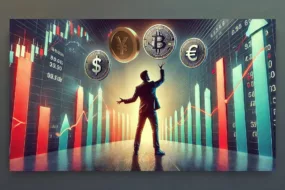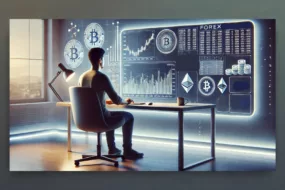
The debate between Solana and Cardano as superior investments is one of the most discussed topics in the cryptocurrency community. Both blockchains have emerged as formidable platforms, each offering unique features and promising significant growth potential.
Solana is known for its high-speed transactions and scalable infrastructure, while Cardano stands out for its research-driven approach and commitment to security and sustainability. In this article, we will delve into a detailed comparison of Solana and Cardano to help you make an informed investment decision.
Key Takeaways
- What makes Solana unique for investors?
- Why is Cardano’s methodical approach valuable?
- How do Solana and Cardano differ in scalability?
- Which blockchain fits your investment goals?
Importance of Choosing Between Solana and Cardano for Investment
Selecting the right cryptocurrency to invest in is crucial for portfolio diversification and long-term growth. Solana and Cardano have distinct philosophies and technological approaches, making the choice between them vital for investors seeking different benefits.
Solana appeals to those looking for high-speed transactions and scalability, while Cardano attracts investors with its methodical and secure approach to blockchain development. Understanding these differences is essential for aligning investments with individual goals and risk tolerance.
Solana vs Cardano: Key Comparison Points
Here’s a detailed comparison between Solana and Cardano investments:
Historical Performance
Since its inception, Solana has experienced a meteoric rise in market capitalization and price. Its rapid development and the growing adoption of its high-speed blockchain have made it a favorite among traders and developers alike.
Cardano, on the other hand, has had a more gradual growth trajectory, focusing on building a secure and scalable network through rigorous academic research and peer-reviewed development processes. Cardano’s ADA cryptocurrency has shown endurance in market downturns, demonstrating its steady growth and strong community support.
Investment Potential
Solana’s investment potential lies in its high throughput and growing ecosystem, which includes numerous DeFi and NFT projects. Its ability to handle thousands of transactions per second makes it attractive for developers and users seeking a seamless blockchain experience.
Cardano’s potential, however, lies in its long-term vision and ability to address key blockchain issues such as scalability, interoperability, and sustainability. Its roadmap and ongoing upgrades like Alonzo and Hydra signal a future growth trajectory that could redefine the blockchain landscape.
Consensus Mechanism
Solana uses a proof-of-history (PoH) consensus mechanism, which enables it to achieve high throughput and low latency. PoH timestamps transactions, allowing them to be processed in parallel and significantly speeding up the network.
Whereas, Cardano employs a proof-of-stake (PoS) consensus algorithm called Ouroboros, which is energy-efficient and secure. Cardano’s PoS model is one of the first to be based on peer-reviewed research, ensuring a high level of security and sustainability.
Scalability Solutions
Solana can handle up to 65,000 transactions per second because of its high throughput and transaction speed. Its unique architecture, including the use of PoH, reduces the need for complex consensus mechanisms, making it extremely scalable.
Cardano uses a layered strategy for scalability, separating the settlement and compute layers. This design, combined with future updates like Hydra, aims to enable the network to process thousands of transactions per second while maintaining decentralization and security.
Smart Contracts and dApps
Solana offers a robust development environment with its programming language, Rust, allowing developers to build scalable, high-performance dApps. Its ecosystem has seen rapid growth in the DeFi and NFT spaces.
Cardano focuses on a secure and formal approach to smart contracts through its Plutus platform, which uses Haskell for smart contract development. This ensures that Cardano’s dApps are more secure and reliable, although it has faced criticism for slower development and rollout compared to other blockchains.
Development Philosophy
Solana prioritizes performance and speed, catering to applications requiring high throughput. Its approach is developer-centric, focusing on delivering a seamless experience and rapid deployment.
On the other hand, Cardano adopts a research-driven approach, emphasizing formal verification, peer review, and sustainability. Its development is methodical, aiming to create a secure and scalable ecosystem for the long term.
Major Projects and Partnerships
Solana has partnered with major crypto players, including Serum, Audius, and USDC. Its ecosystem supports a wide range of applications, particularly in DeFi, with projects like Raydium and Mango Markets.
Instead, Cardano focuses on partnerships that align with its mission of financial inclusion and sustainability. Collaborations with governments and institutions in Africa, for instance, aim to provide blockchain solutions for real-world problems. Cardano also supports numerous projects through its Project Catalyst funding scheme.
Community and Ecosystem Growth
Solana has a rapidly growing community and developer ecosystem driven by its high performance and support for innovative projects. Hackathons and developer grants have contributed to a vibrant and active Solana ecosystem.
In contrast, Cardano boasts a strong and dedicated community that is deeply involved in the platform’s development. The Cardano Foundation and IOHK regularly engage with the community, providing updates and encouraging participation in governance through the Catalyst voting platform.
Regulatory Risks
Both Solana and Cardano face regulatory scrutiny, especially as governments worldwide move to regulate the cryptocurrency space. While Cardano’s focus on compliance and sustainability may position it better in the face of regulation, Solana’s rapid growth and DeFi involvement could attract more regulatory attention.
Technical Challenges
Despite its high throughput, Solana has faced network outages and centralization concerns due to its validator structure, which requires significant hardware and bandwidth.
Cardano faces challenges in its development pace and the complexity of its upgrades. Its rigorous approach can slow the implementation of new features, potentially limiting its adaptability in a fast-moving market.
Market Volatility
Solana and Cardano are subject to market volatility, which can impact their investment stability. Solana’s rapid price increases can lead to sharp corrections, while Cardano’s steady growth offers more resilience but may lack the explosive gains some investors seek.
Solana vs Cardano: Who Wins?
The choice between Solana and Cardano depends on your investing goals and risk tolerance. Solana offers excellent performance and a quickly increasing ecosystem, making it appropriate for those seeking immediate gains and high throughput.
Cardano, with its research-driven approach and focus on security and sustainability, is preferable for long-term investors looking for a more solid and methodical investment. Both have their unique strengths and limitations, so the superior investment is ultimately a matter of matching your individual strategy and risk profile.
Mudrex will help you along the way by offering helpful knowledge and essential abilities. With this advice, you can make intelligent choices that could result in profitable bitcoin trading. Download the Mudrex app from Google Play to obtain all the tools and data you need to get going.
FAQs
What crypto is better than Solana?
Ethereum and Cardano are often compared to Solana, each offering different strengths in scalability, security, and decentralization.
Will Cardano follow Solana?
Cardano has a distinct development philosophy and is unlikely to follow Solana’s path. It focuses on research and long-term sustainability rather than rapid growth.
Should I invest in Cardano?
Investing in Cardano depends on your belief in its long-term vision and commitment to security and sustainability. It’s a solid choice for those seeking a methodical approach to blockchain development.
Is Solana a better investment than Ethereum?
Solana offers faster transactions and lower fees than Ethereum, but Ethereum has a more established ecosystem and broader adoption. Both have their unique investment potential.
Should I buy Cardano or Solana?
Your choice should be based on your investment strategy. Choose Solana for high throughput and rapid ecosystem growth; choose Cardano for a research-backed, secure, and sustainable approach.





